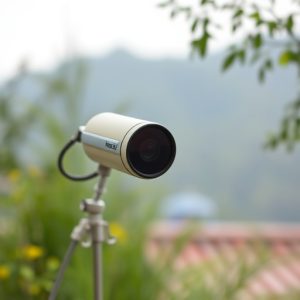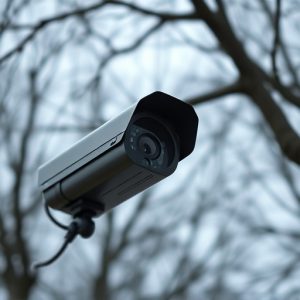Unveiling Hidden Nanny Cams: Testing Night Vision Disguises
Hidden nanny cams disguised as everyday objects like smoke detectors or light bulbs utilize advanced…….
Hidden nanny cams disguised as everyday objects like smoke detectors or light bulbs utilize advanced night vision technology with infrared (IR) illumination to capture clear footage undetected in low-light conditions. While popular for safety and security, their use raises important privacy rights and ethical considerations, requiring responsible, legal deployment. Testing involves specialized lighting and thermal imaging equipment, mimicking natural light conditions and detecting heat signatures to uncover concealed cameras. Despite seemingly innocuous appearances, unique design choices and infrared glow can reveal these cameras. Their deployment in private residences sparks debates about privacy, consent, and potential invasion of personal space, emphasizing the need for strict regulations and ethical considerations.
Unveiling hidden threats has never been more crucial, especially in the age of advanced surveillance technology. This article delves into the intricate world of hidden nanny cams and their innovative use of night vision features. We explore how lights play a pivotal role in disguising camera presence, providing a subtle yet powerful tool for observation. Through an examination of testing methods and common disguises, we uncover vulnerabilities and highlight legal implications, ensuring readers are informed about the potential risks and ethical considerations surrounding this technology.
- Understanding Hidden Nanny Cams and Night Vision Technology
- The Role of Lights in Disguising Camera Presence
- Testing Methods for Identifying Disguised Cameras
- Common Disguises and Their Vulnerabilities
- Legal Implications and Ethical Considerations
Understanding Hidden Nanny Cams and Night Vision Technology
Hidden Nanny Cams, also known as covert cameras, are a type of surveillance equipment designed to operate discreetly, often disguised as everyday objects like smoke detectors or light bulbs. These devices utilize advanced technology, including night vision capabilities, to capture footage in low-light conditions and remain undetected. Night Vision technology, a key component of Hidden Nanny Cams, leverages infrared (IR) illumination to enhance visibility in the dark, ensuring clear images even without visible light.
This innovative approach allows for constant monitoring in various settings, from homes to offices, making it a popular choice for safety and security purposes. The ability to capture high-quality footage undetected has raised important discussions about privacy rights and ethical considerations, prompting users to employ these devices responsibly and within legal boundaries.
The Role of Lights in Disguising Camera Presence
Lights play a pivotal role in disguising the presence of hidden cameras, particularly in night vision applications like hidden nanny cams. By strategically integrating lighting solutions into surveillance systems, manufacturers can significantly reduce the likelihood of discovery. Dimly lit environments, when combined with infrared or UV lighting, create an illusion of normalcy while capturing clear images through enhanced visibility.
This subtle approach ensures that cameras remain unseen, making it ideal for situations requiring long-term observation without alerting subjects. The use of LED lights, for instance, offers energy efficiency and the ability to adjust brightness levels, further contributing to a convincing disguise. Such techniques are invaluable in various scenarios, from home security to professional surveillance, ensuring peace of mind while maintaining privacy.
Testing Methods for Identifying Disguised Cameras
Testing hidden nanny cams and their night vision capabilities involves a meticulous process to ensure no trace of the device is left undetected. One common method is to use specialized lighting equipment that mimics natural light conditions, allowing for realistic testing during various times of the day. By simulating sunlight or moonlight, investigators can observe how the camera’s image quality and visibility are affected. This practice proves invaluable when evaluating potential hidden cameras in homes, offices, or public spaces, as it recreates real-world scenarios.
Another crucial approach is to employ thermal imaging technology, which detects heat signatures, making it highly effective for locating hidden devices with active components. Night vision goggles can also aid in the search by enhancing low-light visibility, thereby uncovering concealed cameras that might be operating in the dark. These testing methods are essential tools in the arsenal of professionals dedicated to identifying and neutralizing disguised surveillance equipment like nanny cams, ensuring privacy and security for individuals and organizations alike.
Common Disguises and Their Vulnerabilities
Common Disguises and Their Vulnerabilities
Disguising cameras, often referred to as hidden nanny cams or covert surveillance devices, come in various forms designed to evade detection. One popular disguise is integration into everyday household items like clocks, smoke detectors, or even artificial plants. While these setups may appear innocuous at first glance, they often lack the reflective surfaces or light-emitting components typically found in genuine versions of these items, making them suspicious to the discerning eye.
Night vision capabilities have also become a standard feature for hidden cameras, allowing users to capture footage in low-light conditions. However, this very capability can be a vulnerability; the infrared lighting used by night vision devices often emits a faint glow that can give away their presence if not properly masked or shielded. In addition, many advanced models require external power sources or batteries, leaving telltale signs of their operation when not carefully managed.
Legal Implications and Ethical Considerations
The use of hidden cameras, particularly in private residences or public spaces, raises significant legal and ethical questions. While tools like night vision hidden nanny cams can offer enhanced security and surveillance capabilities, they must be employed within strict legal boundaries to protect individual privacy rights. Many countries have stringent regulations governing the installation and use of such devices, especially when they involve recording private individuals without their knowledge or consent. Non-compliance with these laws can lead to severe penalties, including fines and imprisonment.
Ethically, the deployment of hidden nanny cams particularly in domestic settings, like a child’s room, stirs debates about trust, consent, and the potential invasion of personal space. It is essential to consider the context and purpose of surveillance; for instance, using such devices for parental monitoring must balance safety with respect for adolescent privacy. Moreover, the unauthorized use of night vision technology can foster an atmosphere of distrust and erode the confidence necessary for healthy interpersonal relationships.
Hidden Nanny Cams equipped with night vision technology have raised concerns due to their potential invasion of privacy. While these cameras can be cleverly disguised using light manipulation, advanced testing methods and awareness of common vulnerabilities are essential tools for identifying their presence. Understanding the legal implications and ethical considerations surrounding this technology is crucial to ensuring a balance between security and personal freedom in today’s digital era.


